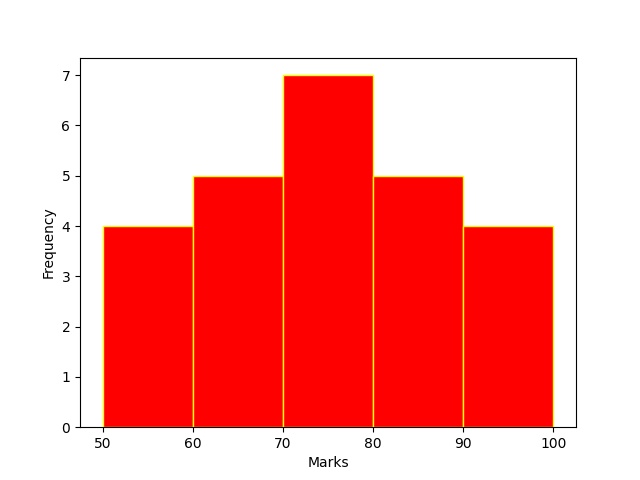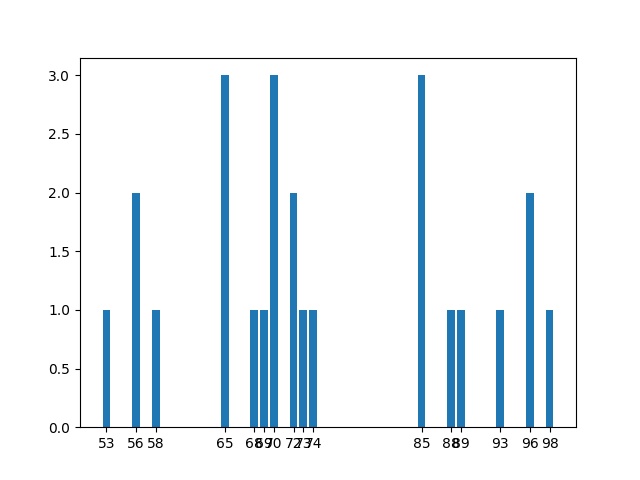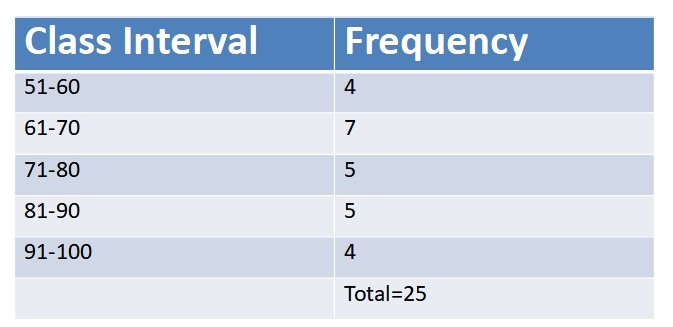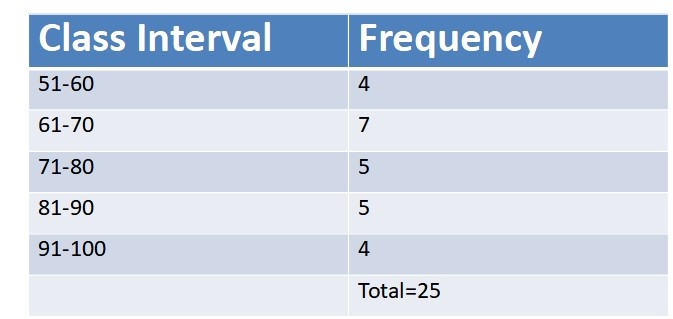Ungrouped data-
Ungrouped data refers list of individual observations 1 which are not categorized or summarized. Basically, ungrouped data are collected by statisticians to get insights from data , researchers to prepare a scholarly article or by by organizations preparing report.
A simple example of ungrouped data, marks obtained by 25 students in class out out of 100 is listed below.
93, 96,96, 98, 85, 85, 85, 88, 89, 70, 70, 73, 74, 70, 72, 72, 53, 56, 56, 58, 65, 65, 65, 68, 69.
The above data can be arranged ascending order,
53, 56, 56, 58, 65, 65, 65, 68, 69, 70, 70, 73, 74, 70, 72, 72, 85, 85, 85, 88, 89, 93, 96,96, 98.
The above data is called arrayed , however, still ungrouped.
We can use frequency distribution table 2
What is frequency distribution?
Frequency distribution table or frequency plot lists the individual values in a table with their number of occurrence (frequency).
Therefore are two ways to show frequency distribution.
1-Frequency Distribution Table
2-Frequency Distribution Plot
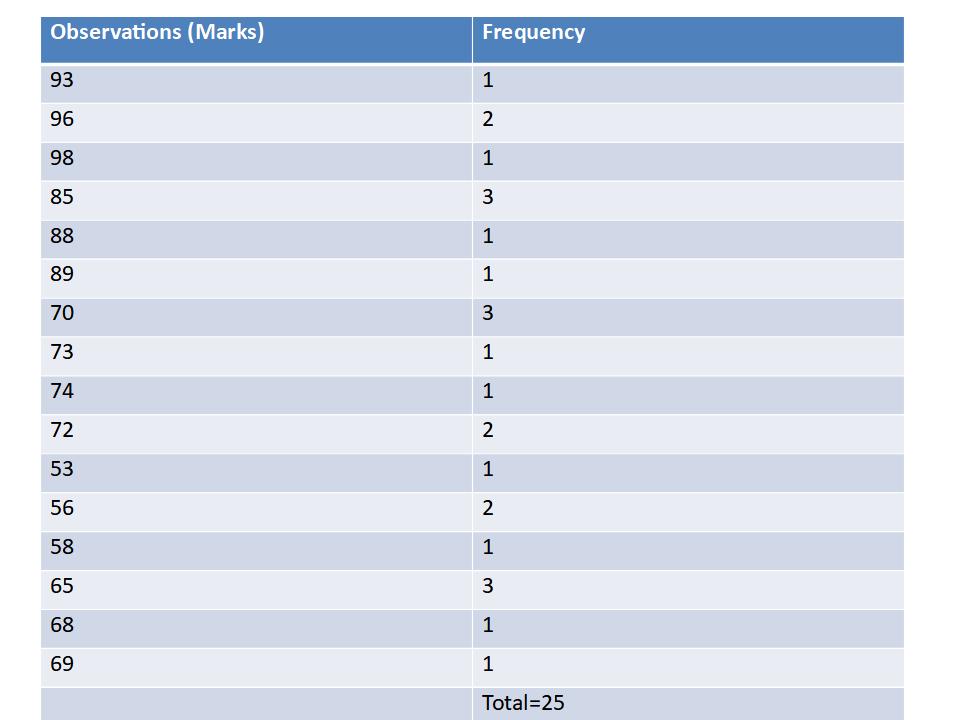
Grouped data-
Grouped data refers to arrangement of individual observations into classes or groups with their corresponding frequencies. When data is large it is time consuming and not feasible to handle ungrouped data, on the other hand, grouped data is easy to handle and manage. Further, there are two methods to organize classes the first one is inclusive method and the second is exclusive method.
1- Inclusive Method-
In inclusive method, upper limit and lower limit of the class interval is included.
2- Exclusive Method-
In inclusive method, only lower limit of the class interval is included.
Frequency Distribution Plot of Grouped Data
See the video-
References
- Data, U. (2019). Introduction to Statistics.
- https://www.cuemath.com/data/frequency-distribution
